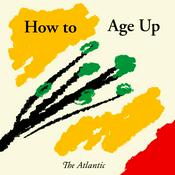Available Episodes
5 of 22
- The Doctrine of the Holy Spirit in RomansIntroductionWho is the Holy Spirit, and what role does he play in Christian life? The doctrine of pneumatology—the study of the Holy Spirit—explores the person and work of the third member of the Trinity. Understanding the Spirit properly affects every aspect of Christian experience, from initial salvation to ongoing sanctification, from prayer to Christian living.The Book of Romans presents a rich understanding of the Holy Spirit's role in salvation and Christian life. Paul doesn't treat the Spirit as an impersonal force but as a divine person who applies Christ's work to believers' hearts and lives. Through Romans, we discover that the Spirit is both the agent of new birth and the power for holy living, both the seal of adoption and the helper in prayer.Understanding the Holy Spirit properly affects every dimension of Christian life and thought. It shapes our understanding of conversion, sanctification, assurance, and prayer. Paul's presentation of the Spirit in Romans challenges both neglect of the Spirit's person and excessive emphasis on spectacular manifestations, revealing the Spirit as the one who applies Christ's work and conforms believers to his image.Biblical Foundation in RomansPaul's understanding of the Holy Spirit emerges throughout Romans, revealing the Spirit's crucial role in every aspect of salvation and Christian living.The Spirit and New LifeRomans 8 provides Paul's most comprehensive discussion of the Holy Spirit's work in believers' lives. Paul begins by declaring, "Therefore, there is now no condemnation for those who are in Christ Jesus, because through Christ Jesus the law of the Spirit who gives life has set you free from the law of sin and death" (Romans 8:1-2). This passage establishes the Spirit as the agent who applies Christ's liberating work to believers.The phrase "Spirit who gives life" reveals the Spirit's life-giving power that contrasts with sin and death's destructive force. This life is not merely biological but spiritual—the eternal life that comes from union with God. The Spirit creates this new life by uniting believers to Christ and his redemptive work.Romans 8:9-11 further explains the Spirit's indwelling presence in believers: "You, however, are not in the realm of the flesh but are in the realm of the Spirit, if indeed the Spirit of God lives in you. And if anyone does not have the Spirit of Christ, he does not belong to Christ." This passage establishes that Spirit-indwelling is the mark of genuine Christianity rather than an optional experience for some believers.The Spirit's presence transforms believers' fundamental orientation from flesh to Spirit. This transformation affects desires, motivations, and behaviour patterns. Romans 8:5 explains, "Those who live according to the flesh have their minds set on what the flesh desires; but those who live in accordance with the Spirit have their minds set on what the Spirit desires."The Spirit of AdoptionOne of Paul's most profound insights concerns the Spirit's role in adoption. Romans 8:15-16 declares, "The Spirit you received does not make you slaves, so that you live in fear again; rather, the Spirit you received brought about your adoption to sonship. And by him we cry, 'Abba, Father.' The Spirit himself testifies with our spirit that we are God's children."The Spirit of adoption contrasts with a spirit of slavery that produces fear. This adoption spirit enables believers to approach God with confidence as beloved children rather than cowering as condemned slaves. The transformation from slavery to sonship represents salvation's relational dimension—believers gain not merely forgiveness but family membership.The cry "Abba, Father" reveals the intimacy that the Spirit creates between believers and God. "Abba" was the Aramaic term children used for their fathers, suggesting both respect and affection. The Spirit enables believers to address the sovereign God of the universe with childlike trust and intimacy.The Spirit's testimony to believers' sonship provides internal assurance of salvation. This testimony is not merely emotional experience but the Spirit's witness to the objective reality of adoption. The Spirit confirms what God has declared—that believers are truly his children with all the privileges and inheritance that sonship entails.The Spirit and SanctificationRomans 8:12-14 reveals the Spirit's role in progressive sanctification: "Therefore, brothers and sisters, we have an obligation—but it is not to the flesh, to live according to it. For if you live according to the flesh, you will die; but if by the Spirit you put to death the misdeeds of the body, you will live. For those who are led by the Spirit of God are the children of God."The Spirit provides power for believers to "put to death the misdeeds of the body." This mortification is not mere self-discipline but Spirit-enabled victory over sin's remaining influence. The Spirit works both to reveal sin's true character and to provide power for resistance and obedience.Being "led by the Spirit" characterises genuine believers as distinguished from unbelievers. This leading involves both guidance in specific decisions and general conformity to God's will revealed in Scripture. The Spirit leads believers away from sin and toward righteousness, gradually transforming them into Christ's likeness.The connection between Spirit-leading and sonship indicates that sanctification is not optional for Christians but evidence of genuine salvation. Those who consistently live according to the flesh demonstrate that they do not possess the Spirit and therefore do not belong to Christ.The Spirit and PrayerRomans 8:26-27 reveals the Spirit's ministry in believers' prayer lives: "In the same way, the Spirit helps us in our weakness. We do not know what we ought to pray for, but the Spirit himself intercedes for us through wordless groans. And he who searches our hearts knows the mind of the Spirit, because the Spirit intercedes for God's people in accordance with the will of God."The Spirit's help in prayer addresses human weakness and ignorance. Believers often don't know what to pray for or how to pray appropriately. The Spirit bridges this gap by interceding on believers' behalf, translating their inadequate prayers into perfect petitions that align with God's will.The "wordless groans" suggest prayer that transcends human language and understanding. This doesn't necessarily refer to tongues-speaking but to the Spirit's deep intercession that goes beyond what believers can express verbally. The Spirit understands both human needs and divine purposes, enabling perfect prayer.The assurance that the Spirit intercedes "in accordance with the will of God" guarantees that Spirit-prompted prayers will be answered. This doesn't mean believers always receive what they request but that the Spirit shapes their requests to align with God's purposes, ensuring that their deepest needs are met.The Spirit and HopeRomans 8:23 connects the Spirit to believers' future hope: "Not only so, but we ourselves, who have the firstfruits of the Spirit, groan inwardly as we wait eagerly for our adoption to sonship, the redemption of our bodies." The Spirit serves as "firstfruits"—the initial instalment of the full salvation that awaits believers.This firstfruits metaphor indicates that the Spirit's present work provides both a foretaste of future glory and a guarantee of its certain arrival. Just as firstfruits prove the harvest's reality, the Spirit's presence proves that full redemption will come. This assurance enables believers to endure present suffering with confident hope.The groaning mentioned here is not despair but eager anticipation. Both creation and believers groan for redemption's completion, with the Spirit enabling this longing for God's ultimate purposes to be fulfilled. This groaning reflects the tension between salvation's "already" and "not yet" aspects.Practical ImplicationsPaul's teaching about the Holy Spirit in Romans carries profound implications for Christian life and ministry.Assurance and IdentityUnderstanding the Spirit's role in adoption provides solid foundations for Christian assurance. Believers can be confident of their salvation not based on their performance but on the Spirit's internal testimony to their sonship. This assurance rests on the Spirit's work rather than fluctuating emotions or circumstances.The Spirit's presence also shapes Christian identity. Believers are not merely forgiven sinners but adopted children with full family privileges. This identity transformation affects how Christians view themselves, their relationships with others, and their approach to life's challenges.Sanctification and Holy LivingRomans' teaching about the Spirit provides proper understanding of how believers grow in holiness. Victory over sin comes not through increased human effort but through dependence on the Spirit's power. This shifts focus from self-improvement to reliance on divine resources.Understanding that all genuine believers possess the Spirit eliminates the pursuit of a "second blessing" while maintaining expectations for spiritual growth. The Spirit's presence guarantees both the possibility and necessity of progressive sanctification.Prayer and Spiritual LifeThe Spirit's role in prayer encourages believers to pray even when they feel inadequate or confused about what to request. The Spirit transforms weak prayers into effective intercession, ensuring that believers' deepest needs are addressed even when they cannot articulate them clearly.This teaching also shapes expectations about prayer. Rather than expecting immediate answers to every request, believers can trust that the Spirit shapes their prayers to align with God's purposes, ensuring that prayer accomplishes God's will.Ministry and EvangelismUnderstanding the Spirit's role in conversion affects evangelistic method and expectations. Because the Spirit must create new life, evangelists depend on divine power rather than human persuasion alone. This creates both humility about human ability and confidence in God's power to transform hearts.The Spirit's work in believers also shapes ministry philosophy. Christian ministry involves cooperating with the Spirit's sanctifying work rather than merely providing information or moral instruction. This emphasises the supernatural character of Christian growth and transformation.ConclusionPaul's teaching about the Holy Spirit in Romans provides essential foundations for Christian faith and practice. Through his exploration of the Spirit's role in new life, adoption, sanctification, prayer, and hope, Paul reveals the Spirit as the one who applies Christ's work to believers' hearts and lives.Understanding the Holy Spirit properly affects every aspect of Christian life, from assurance and identity to sanctification and prayer. Paul's presentation challenges us to recognise the Spirit as both divine person and active presence who transforms believers from the inside out. As we respond to this revelation, we discover that knowing the Spirit truly leads not to spectacular experiences but to steady growth in Christlikeness through the power of the one who dwells within all who belong to Christ. This is a public episode. If you would like to discuss this with other subscribers or get access to bonus episodes, visit menaianglican.substack.com--------13:22
- The Doctrine of the Church in RomansIntroductionWhat is the church, and why does it matter? The doctrine of ecclesiology—the study of the church—explores the nature, purpose, and function of the community God creates through the gospel. Understanding the church properly affects how we view Christian fellowship, ministry, evangelism, and our relationship to both local congregations and the universal body of Christ.The Book of Romans presents a profound understanding of the church as the unified community of all who believe in Christ, transcending ethnic, social, and cultural boundaries. Paul doesn't treat the church as a human organisation but as God's new creation that brings together Jews and Gentiles in one body. Through Romans, we discover that the church is both a spiritual organism and a practical community, both a display of God's wisdom and an instrument of his mission.Understanding the church properly affects every dimension of Christian life and thought. It shapes our approach to worship, fellowship, ministry, and evangelism. Paul's presentation of the church in Romans challenges both individualistic Christianity that ignores community and institutional Christianity that emphasises structure over spiritual reality.Biblical Foundation in RomansPaul's understanding of the church emerges throughout Romans, revealing the church's nature as the unified people of God and its practical expression in local communities.The Unity of Jews and GentilesCentral to Romans is Paul's argument that the gospel creates one people of God from both Jews and Gentiles. Romans 1:16 declares that the gospel "is the power of God that brings salvation to everyone who believes: first to the Jew, then to the Gentile." This sequence indicates not priority in time but the historical unfolding of God's redemptive plan.Romans 3:29-30 asks, "Or is God the God of Jews only? Is he not the God of Gentiles too? Yes, of Gentiles too, since there is only one God, who will justify the circumcised by faith and the uncircumcised through that same faith." This passage establishes that the one true God saves all people through the same means—faith in Christ—creating one unified people.The Abraham narrative in Romans 4 demonstrates this unity by showing that Abraham is "the father of all who believe" (Romans 4:11), whether circumcised or uncircumcised. This spiritual paternity transcends ethnic boundaries, making Abraham the father of a multiethnic people united by faith rather than physical descent.Romans 9-11 addresses the relationship between Israel and the church in redemptive history. Paul explains that God has not rejected Israel permanently but has temporarily included Gentiles to provoke Israel to jealousy. The ultimate goal is one people comprising "all Israel" and "the fullness of the Gentiles" (Romans 11:25-26).This unity challenges both Jewish exclusivism and Gentile supersessionism. The church includes believing Jews and Gentiles as equal members of God's family, with neither group having superior status. This equality flows from salvation by grace through faith rather than ethnic heritage or cultural achievement.The Body of ChristRomans 12:3-8 presents Paul's most developed discussion of the church as Christ's body: "For just as each of us has one body with many members, and these members do not all have the same function, so in Christ we, though many, form one body, and each member belongs to all the others. We have different gifts, according to the grace given to each of us."This body metaphor reveals several crucial truths about the church. First, the church possesses organic unity—it is one body, not a collection of individuals. This unity comes from union with Christ rather than human agreement or shared interests. Second, the church includes diversity—different members with different functions. This diversity is not a problem to solve but a design feature that reflects God's wisdom.Third, the body metaphor indicates mutual dependence—"each member belongs to all the others." No individual Christian is self-sufficient but needs other believers for spiritual health and growth. This interdependence extends beyond emotional support to include practical ministry and spiritual accountability.The diversity of gifts within the body serves the church's mission and edification. Paul lists prophecy, service, teaching, encouraging, giving, leadership, and mercy as examples of how different believers contribute to the body's health. These gifts are not earned achievements but divine distributions according to God's grace.The Church's Worship and LifeRomans 12:1-2 provides foundational principles for church life: "Therefore, I urge you, brothers and sisters, in view of God's mercy, to offer your bodies as a living sacrifice, holy and pleasing to God—this is your true and proper worship. Do not conform to the pattern of this world, but be transformed by the renewing of your mind."This passage reveals that true worship encompasses all of life rather than merely formal religious activities. The church's corporate worship should flow from and encourage individual lives lived as "living sacrifices." This integration prevents the separation of sacred and secular that often weakens church witness.The call to transformation rather than conformity shapes the church's relationship to surrounding culture. The church should be distinctively Christian in its values and practices while remaining engaged with the world it seeks to reach. This balance requires wisdom to maintain biblical fidelity while demonstrating gospel relevance.Romans 12:9-21 provides specific instructions for church relationships: "Love must be sincere. Hate what is evil; cling to what is good. Be devoted to one another in love. Honour one another above yourselves." These commands create a counter-cultural community that demonstrates gospel transformation through practical love and mutual care.The Church's Mission and WitnessRomans reveals the church's missionary nature through Paul's example and teaching. Romans 1:14-15 expresses Paul's sense of obligation to preach the gospel "to Greeks and non-Greeks, the wise and the foolish." This missionary burden reflects the church's fundamental purpose as God's instrument for worldwide evangelisation.Romans 10:14-15 explains the church's essential role in gospel proclamation: "How, then, can they call on the one they have not believed in? And how can they believe in the one of whom they have not heard? And how can they hear without someone preaching to them? And how can anyone preach unless they are sent?" This chain of questions demonstrates that human faith depends on human proclamation.The church's missionary nature extends beyond formal evangelism to include demonstrating gospel truth through transformed community life. Romans 15:5-6 prays that God would grant believers unity "so that with one mind and one voice you may glorify the God and Father of our Lord Jesus Christ." This united witness provides powerful testimony to gospel effectiveness.Paul's description of his missionary strategy in Romans 15:14-21 reveals principles for church mission. He focuses on unreached areas, depends on divine power rather than human wisdom, and aims to establish indigenous churches that can continue the evangelistic work. These principles guide contemporary missionary strategy and church planting efforts.Church Leadership and OrderWhile Romans doesn't extensively discuss church government, it provides important principles for leadership and order. Romans 12:6-8 mentions leadership as a spiritual gift that should be exercised "with zeal." This suggests that leadership in the church requires both divine enablement and human diligence.Romans 16:1-16 reveals the diversity of people involved in church ministry, including both men and women in various roles. Phoebe is commended as "a deacon of the church in Cenchreae" and "a benefactor of many people" (Romans 16:1-2). Priscilla and Aquila are described as Paul's "co-workers in Christ Jesus" who "risked their lives" for him (Romans 16:3-4).This diversity in ministry roles suggests that the church should utilise all members' gifts and abilities while maintaining biblical principles for church order. The emphasis falls on faithful service rather than hierarchical position, though the church clearly needs recognised leadership for direction and accountability.Practical ImplicationsPaul's teaching about the church in Romans carries profound implications for Christian life and ministry.Unity and DiversityUnderstanding the church as one body with many members shapes how Christians approach denominational differences and cultural diversity. While maintaining biblical truth, churches should celebrate the diversity that enriches the body rather than demanding unnecessary uniformity.This principle also affects local church life by encouraging inclusion of people from different backgrounds and utilisation of varied gifts. Churches should resist both ethnic segregation and spiritual elitism that exclude genuine believers from full participation.Ministry and ServiceRomans' teaching about spiritual gifts encourages all believers to identify and exercise their gifts for the body's benefit. This democratises ministry by recognising that every believer has something to contribute rather than relegating ministry to professional clergy alone.The emphasis on serving according to one's gifts also prevents both spiritual pride and inadequacy feelings. Believers should neither despise their gifts as insignificant nor envy others' gifts as superior, but faithfully use what God has provided.Worship and Community LifePaul's concept of worship as "living sacrifice" integrates spiritual and practical aspects of church life. Corporate worship should both express and encourage individual discipleship while community life should reflect worship principles of sacrifice and service.The call for sincere love and mutual honour creates expectations for church relationships that transcend mere politeness or shared interests. Church communities should demonstrate gospel transformation through practical care and genuine fellowship.Mission and EvangelismUnderstanding the church's missionary nature motivates both individual evangelism and corporate mission efforts. Every local church should see itself as God's instrument for reaching its community and supporting worldwide evangelisation.The example of Paul's missionary strategy also guides contemporary church planting and cross-cultural ministry, emphasising dependence on God's power, focus on unreached areas, and establishment of indigenous leadership.ConclusionPaul's teaching about the church in Romans provides essential foundations for Christian faith and practice. Through his exploration of the church's unity, diversity, worship, and mission, Paul reveals the church as God's new creation that demonstrates his wisdom and accomplishes his purposes in the world.Understanding the church properly affects every aspect of Christian life, from individual discipleship to corporate worship, from local fellowship to global mission. Paul's presentation challenges us to see the church not as a human institution but as Christ's body that continues his ministry in the world. As we respond to this revelation, we discover that knowing the church truly leads not to institutional loyalty but to transformed participation in God's mission to reconcile the world to himself through the gospel. This is a public episode. If you would like to discuss this with other subscribers or get access to bonus episodes, visit menaianglican.substack.com--------16:19
- The Doctrine of Salvation in RomansIntroductionHow can sinful humanity be reconciled to a holy God? This question lies at the heart of the Christian gospel and determines everything about our relationship with God. Soteriology—the study of salvation—explores how God rescues people from sin's condemnation and corruption, bringing them into eternal fellowship with himself.The Book of Romans provides Scripture's most systematic treatment of salvation, carefully explaining its necessity, nature, and application. Paul doesn't present salvation as one option among many but as God's exclusive solution to humanity's desperate condition. Through Romans, we discover that salvation is entirely by grace through faith, accomplished by Christ's work and applied by the Holy Spirit.Understanding salvation properly affects every dimension of Christian life and thought. It shapes our understanding of the gospel, determines our approach to evangelism, influences our view of good works, and provides the foundation for Christian assurance. Paul's presentation of salvation in Romans challenges both works-based religion and cheap grace, revealing salvation as both free gift and transforming power.Biblical Foundation in RomansPaul's understanding of salvation unfolds systematically throughout Romans, revealing salvation's various aspects and their logical relationships.Justification by Faith AloneCentral to Romans is Paul's declaration that "a person is justified by faith apart from the works of the law" (Romans 3:28). This statement summarises the heart of the gospel—that people are declared righteous before God not through their performance but through faith in Christ's finished work.Romans 3:21-26 provides Paul's most detailed explanation of justification. Paul explains that "the righteousness of God is revealed" apart from law, coming "through faith in Jesus Christ to all who believe." This righteousness is not human moral achievement but divine gift that comes through faith alone. The phrase "apart from the works of the law" excludes all human contribution to justification.Paul illustrates justification through Abraham's example in Romans 4. He argues that Abraham "believed God, and it was credited to him as righteousness" (Romans 4:3). This crediting or imputation reveals justification's forensic nature—God declares believers righteous based on Christ's merit rather than their character or behaviour.The exclusion of human works from justification serves multiple purposes. It ensures that salvation remains entirely by grace, eliminates human boasting, and provides assurance based on God's character rather than human performance. Romans 4:16 explains that justification comes "by faith so that it may be by grace and may be guaranteed to all Abraham's offspring."Propitiation and AtonementRomans 3:25 describes Christ as "a sacrifice of atonement, through the shedding of his blood." The Greek term "hilasterion" indicates that Christ's death satisfied divine justice while providing mercy for sinners. This propitiation explains how God can remain just while justifying the ungodly.The necessity of propitiation reflects both God's holiness and humanity's sinfulness. Because God is perfectly just, sin must be punished. Because humans are genuinely guilty, they cannot provide adequate satisfaction for their sins. Christ's death resolves this dilemma by bearing the punishment that justice demands while providing the righteousness that mercy requires.Paul emphasises that this propitiation was "public" or displayed openly, demonstrating God's justice in passing over previous sins. The cross reveals that God's patience with sin was not indifference to justice but confidence in future atonement. This public demonstration vindicates God's character while providing salvation for sinners.The effectiveness of Christ's atonement depends on both his divine nature (providing infinite value) and his human nature (enabling substitution). Only one who is both God and man could bear infinite punishment while representing finite humans.The Golden Chain of SalvationRomans 8:28-30 presents what theologians call the "golden chain" of salvation: "Those God foreknew he also predestined to be conformed to the image of his Son. And those he predestined, he also called; those he called, he also justified; those he justified, he also glorified." This chain reveals salvation's unbreakable sequence from divine purpose to final glory.Foreknowledge in this context refers not merely to divine awareness but to God's loving choice of specific individuals for salvation. This foreknowledge leads to predestination—God's eternal decree to conform the elect to Christ's image. The goal of predestination is conformity to Christ, showing that salvation aims at transformation, not merely forgiveness.Divine calling represents God's effective summons that brings the elect to faith. This calling is "irresistible" not because it coerces human will but because it transforms hearts to respond willingly to the gospel. Those who are called inevitably come to faith because God's call creates the very faith it requires.Justification follows calling as God's declaration that believers are righteous in his sight. This justification is simultaneous with faith, providing immediate acceptance with God based on Christ's finished work. The past tense indicates the completed nature of justification for all who believe.Glorification represents salvation's final consummation when believers receive resurrection bodies and perfect holiness. Paul uses the past tense even for this future event, indicating its certainty based on God's unchanging purpose. What God has purposed will certainly be accomplished.Sanctification and New LifeRomans 6-8 explores salvation's sanctifying dimension, showing that justification leads inevitably to transformed living. Paul asks, "Shall we go on sinning so that grace may increase?" and answers emphatically, "By no means! We are those who have died to sin; how can we live in it any longer?" (Romans 6:1-2).The reality of believers' union with Christ provides the foundation for sanctification. Romans 6:3-4 explains that baptism symbolises believers' participation in Christ's death and resurrection. This union means that what happened to Christ has also happened to believers—they have died to sin's dominion and been raised to new life.This new life involves both negative and positive dimensions. Negatively, believers are "dead to sin" (Romans 6:11)—freed from sin's tyrannical rule over their lives. Positively, they are "alive to God in Christ Jesus"—empowered for righteousness and service. This transformation is both positional (accomplished at conversion) and progressive (worked out through life).The Holy Spirit's role in sanctification appears prominently in Romans 8. The Spirit enables believers to "live according to the Spirit" rather than "according to the flesh" (Romans 8:5). This involves both inner transformation of desires and external conformity to God's will. The Spirit provides both motivation and power for holy living.Assurance and PerseveranceRomans provides strong foundations for Christian assurance based on God's character and work rather than human performance. Romans 5:1-2 declares that justified believers "have peace with God through our Lord Jesus Christ" and "stand in grace." This peace and standing depend on Christ's work, not ongoing human effort.The permanence of salvation appears in Romans 8:31-39, where Paul asks, "If God is for us, who can be against us?" He then lists potential threats to salvation—trouble, hardship, persecution, famine, nakedness, danger, sword—and declares that none can separate believers from God's love in Christ. This assurance rests on God's unchanging character and Christ's sufficient work.Romans 8:38-39 extends this assurance to cosmic dimensions: "Neither death nor life, neither angels nor demons, neither the present nor the future, nor any powers, neither height nor depth, nor anything else in all creation, will be able to separate us from the love of God that is in Christ Jesus our Lord." This comprehensive list excludes any force capable of undoing salvation.Practical ImplicationsPaul's teaching about salvation in Romans carries profound implications for Christian life and ministry.Evangelism and Gospel PresentationUnderstanding salvation properly shapes how Christians present the gospel. Paul's teaching reveals that salvation is entirely by grace through faith, requiring no human contribution or preparation. This means evangelism should emphasise God's gracious provision rather than human effort or worthiness.The exclusivity of salvation through Christ provides both urgency and confidence in evangelism. Because Christ is the only way to God, evangelism is necessary for all people. Because salvation is entirely God's work, evangelists can trust the Holy Spirit to apply the gospel message effectively.Christian Living and SanctificationRomans' teaching about salvation provides proper motivation for holy living. Believers pursue righteousness not to earn salvation but in response to salvation already received. This prevents both legalism (earning favour through performance) and antinomianism (ignoring moral standards).Understanding union with Christ encourages believers in their struggle against sin. Victory comes not through increased effort but through reckoning on the reality of death to sin and life to God. This shifts focus from self-improvement to reliance on God's provision.Pastoral Care and CounsellingPaul's teaching about salvation provides crucial foundations for pastoral care. Understanding that salvation is entirely by grace helps counsellors address guilt, shame, and fear appropriately. Past failures cannot threaten salvation that depends on Christ's work rather than human performance.The doctrine of perseverance provides comfort for struggling believers while the reality of sanctification maintains expectations for growth and change. This balance prevents both false assurance and unnecessary anxiety about salvation.Worship and GratitudeProper understanding of salvation produces appropriate worship and gratitude. Because salvation is entirely God's gift, all glory belongs to God rather than human achievement. Romans 11:36 declares, "For from him and through him and for him are all things. To him be the glory forever! Amen."This recognition of God's grace in salvation shapes all of life as worship and service rather than merely specific religious activities. Romans 12:1 calls believers to "offer your bodies as a living sacrifice, holy and pleasing to God—this is your true and proper worship."ConclusionPaul's teaching about salvation in Romans provides essential foundations for Christian faith and practice. Through his exploration of justification, propitiation, calling, and sanctification, Paul reveals salvation as God's gracious solution to humanity's desperate condition.Understanding salvation properly affects every aspect of Christian life, from evangelism and holy living to pastoral care and worship. Paul's presentation challenges us to receive salvation as pure gift while living as grateful recipients of divine grace. As we respond to this revelation, we discover that knowing salvation truly leads not to presumption but to transformed living that brings glory to the God who saves sinners and conforms them to the image of his Son. This is a public episode. If you would like to discuss this with other subscribers or get access to bonus episodes, visit menaianglican.substack.com--------16:18
- Christology: The Person of Christ in RomansIntroductionWho is Jesus Christ? This question stands at the heart of Christianity and determines everything else about the faith. Christology—the study of Christ's person and nature—explores how Jesus can be both fully God and fully human, both historical figure and eternal Lord. Understanding Christ's identity properly affects our view of salvation, worship, ethics, and the nature of God himself.The Book of Romans presents a rich portrait of Christ that encompasses his divine nature, human identity, and redemptive work. Paul doesn't offer abstract theological speculation but reveals Christ as the solution to humanity's deepest problems. Through Romans, we discover that Jesus is both the promised Messiah and the eternal Son of God, both representative human and divine Saviour.Understanding Christ's person properly affects every dimension of Christian life and thought. It shapes our worship, determines our understanding of salvation, guides our ethical living, and provides the foundation for our hope. Paul's presentation of Christ in Romans challenges both low views that diminish his divinity and docetic views that deny his true humanity.Biblical Foundation in RomansPaul's understanding of Christ's person emerges throughout Romans, revealing the profound mystery of the incarnation and its significance for redemption.Christ's Divine NatureRomans opens with a powerful declaration of Christ's divine identity. Paul describes the gospel as concerning "his Son, who as to his earthly life was a descendant of David, and who through the Spirit of holiness was appointed the Son of God in power by his resurrection from the dead: Jesus Christ our Lord" (Romans 1:3-4). This passage establishes both Christ's humanity and divinity in careful balance.The phrase "Son of God in power" indicates Christ's divine nature rather than merely his messianic office. Paul uses "appointed" not to suggest Christ became divine at his resurrection but that his divine sonship was publicly demonstrated through his victory over death. The resurrection serves as God's vindication of Christ's claims and proof of his divine identity.Romans 9:5 provides an even more explicit declaration of Christ's divinity: "Theirs are the patriarchs, and from them is traced the human ancestry of the Messiah, who is God over all, forever praised! Amen." This doxological statement identifies Christ as "God over all," affirming his supreme divine status. The exclamation "Amen" emphasises the significance of this declaration.The attribution of divine prerogatives to Christ throughout Romans further confirms his deity. Christ exercises divine judgement (Romans 2:16), receives worship and prayer (Romans 10:12-13), and accomplishes salvation that only God can provide. These functions presuppose divine nature rather than merely divine commissioning.Christ's True HumanityWhile affirming Christ's divinity, Romans also emphasises his genuine humanity. Paul describes Christ as "a descendant of David" according to the flesh (Romans 1:3), placing him firmly within human history and genealogy. This descendance from David fulfils Old Testament messianic promises while establishing Christ's real human nature.Romans 8:3 provides crucial insight into the incarnation: "For what the law was powerless to do because it was weakened by the flesh, God did by sending his Son in the likeness of sinful flesh to be a sin offering." The phrase "likeness of sinful flesh" carefully balances Christ's true humanity with his sinlessness. He possessed genuine human nature while remaining free from sin's corruption.This passage reveals the necessity of Christ's humanity for redemption. Because the law was "weakened by the flesh"—unable to provide salvation due to human sinfulness—God sent his Son in human nature to accomplish what the law could not. Christ's humanity enables him to serve as humanity's representative and substitute.The reality of Christ's humanity also appears in Paul's discussion of his death. Romans 5:6-8 emphasises that "Christ died for the ungodly" and that "Christ died for us." These statements presuppose that Christ possessed genuine human nature capable of death, while also revealing that his death carried redemptive significance beyond ordinary human experience.Christ as the Second AdamRomans 5:12-21 presents one of Scripture's most important christological passages, contrasting Christ with Adam as representative heads of humanity. Paul explains that "just as sin entered the world through one man, and death through sin... so also through the obedience of the one man the many will be made righteous" (Romans 5:12, 19).This Adam-Christ parallel reveals Christ's unique role as the second Adam who reverses the first Adam's failure. Where Adam brought condemnation through disobedience, Christ brings justification through obedience. Where Adam's sin resulted in death, Christ's righteousness produces life. This contrast shows that Christ functions not merely as an individual but as humanity's new representative head.The effectiveness of Christ's representative work depends on both his humanity and his divinity. As human, he can legitimately represent other humans. As divine, his obedience carries infinite value sufficient to counteract Adam's disobedience and its consequences for all humanity. This dual nature makes possible the transfer of both guilt and righteousness that lies at the heart of justification.Paul's emphasis that grace "increased all the more" where sin increased (Romans 5:20) reveals Christ's superiority over Adam. Christ's work not only undoes Adam's damage but exceeds it, bringing greater blessing than would have existed without the fall. This superabundance reflects Christ's divine nature and infinite merit.Christ's Redemptive WorkThroughout Romans, Paul connects Christ's person to his redemptive work, showing that salvation depends on who Christ is as much as what he accomplished. Romans 3:24-26 describes redemption as coming "through the redemption that came by Christ Jesus. God presented Christ as a sacrifice of atonement, through the shedding of his blood—to be received by faith."The term "sacrifice of atonement" (hilasterion) indicates that Christ's death satisfied divine justice while providing mercy for sinners. This dual function requires both Christ's humanity (to die as a substitute) and his divinity (to bear infinite punishment and provide perfect righteousness). Only one who is both God and man could accomplish such redemption.Romans 8:3-4 explains that God accomplished redemption "by sending his Son in the likeness of sinful flesh to be a sin offering. And so he condemned sin in the flesh, in order that the righteous requirement of the law might be fully met in us." This passage shows that Christ's incarnation was specifically for redemptive purposes, enabling him to bear sin's condemnation while fulfilling law's requirements.The present work of the risen Christ also depends on his divine-human nature. Romans 8:34 declares that "Christ Jesus who died—more than that, who was raised to life—is at the right hand of God and is also interceding for us." This intercession requires both humanity (to sympathise with human weakness) and divinity (to access God's presence and guarantee effectiveness).Practical ImplicationsPaul's teaching about Christ's person in Romans carries profound implications for Christian life and ministry.Worship and DevotionUnderstanding Christ's divine nature provides the foundation for authentic Christian worship. Because Christ is truly God, he deserves the same honour, praise, and obedience due to the Father. Romans 10:12-13 encourages believers to "call on the name of the Lord," applying Old Testament language about Yahweh directly to Christ.Christ's humanity makes this worship accessible and meaningful. Because he shares human nature, believers can relate to Christ personally while recognising his divine majesty. This balance prevents both casual familiarity and fearful distance in Christian devotion.Assurance of SalvationChrist's dual nature provides complete assurance of salvation's effectiveness. His humanity ensures that he truly represents other humans, while his divinity guarantees that his sacrifice carries infinite value. Romans 8:32 asks, "He who did not spare his Son, but gave him up for us all—how will he not also, along with him, graciously give us all things?"The resurrection demonstrates both Christ's victory over death and God's acceptance of his sacrifice. Because the divine Son conquered death, believers can be confident that death has no ultimate power over those united to Christ.Christian Living and EthicsChrist's example as the perfect human provides a pattern for Christian living. Romans 15:3 notes that "even Christ did not please himself," encouraging believers to follow his example of self-sacrifice and service to others.Understanding Christ's humanity also provides comfort in suffering and temptation. Because he experienced genuine human life, including suffering and testing, he can sympathise with human struggles while providing strength for endurance.Evangelism and ApologeticsChrist's unique nature as God-man provides the foundation for the gospel's universal relevance and effectiveness. Because he is divine, his salvation extends to all peoples and cultures. Because he is human, he can represent all humanity regardless of ethnic or social background.The historical reality of Christ's humanity provides an objective foundation for faith that transcends subjective religious experience. The incarnation grounds Christianity in history while revealing eternal truth.Pastoral MinistryUnderstanding Christ's nature shapes pastoral care and counselling. His divine nature provides unlimited resources for addressing human problems, while his humanity ensures understanding and compassion for human struggles.The balance of Christ's divine and human natures also provides a model for ministry that combines transcendent authority with incarnational accessibility.ConclusionPaul's teaching about Christ's person in Romans provides essential foundations for Christian faith and practice. Through his exploration of Christ's divine nature, true humanity, and redemptive work, Paul reveals the profound mystery of the incarnation that makes salvation possible.Understanding Christ's person properly affects every aspect of Christian life, from worship and assurance to ethics and evangelism. Paul's portrait challenges us to recognise Christ as both the eternal Son of God and the perfect human who represents us before the Father. As we respond to this revelation, we discover that knowing Christ truly leads not merely to intellectual understanding but to transforming relationship with the one who is both our God and our brother, our Judge and our Saviour. This is a public episode. If you would like to discuss this with other subscribers or get access to bonus episodes, visit menaianglican.substack.com--------14:25
- The Doctrine of Humanity in RomansIntroductionWhat does it mean to be human? This fundamental question affects every aspect of life, from personal identity to social relationships, from ethics to politics. The doctrine of anthropology—the study of human nature and purpose—provides crucial foundations for understanding ourselves and our place in God's creation.The Book of Romans presents a comprehensive view of humanity that is both sobering and hopeful. Paul doesn't offer a philosophical treatise about human nature but reveals humanity's actual condition before God. Through Romans, we discover that humans are created in God's image yet fallen into sin, capable of great nobility yet prone to profound corruption, individually responsible yet corporately connected.Understanding human nature properly affects every dimension of Christian thought and practice. It shapes our approach to evangelism, counselling, education, and social justice. Paul's portrait of humanity in Romans challenges both naive optimism about human potential and despairing pessimism about human worth.Biblical Foundation in RomansPaul's understanding of human nature unfolds systematically throughout Romans, revealing both humanity's original dignity and its present corruption.Universal Human SinfulnessRomans 1:18-3:20 presents Paul's most comprehensive analysis of human sinfulness, systematically demonstrating that all people—regardless of culture, religion, or moral achievement—stand condemned before God. Paul begins with Gentile idolatry and immorality, moves to Jewish hypocrisy and covenant breaking, and concludes that "there is no one righteous, not even one" (Romans 3:10).This universal condemnation reflects humanity's fundamental problem. Paul quotes extensively from the Old Testament to show that sinfulness pervades every aspect of human existence: "Their throats are open graves; their tongues practice deceit" (Romans 3:13). These images reveal sin's comprehensive corruption of human nature.The universality of sin means that moral distinctions between people, while real, are ultimately insignificant before God's perfect standards. Romans 2:1 warns against judging others: "You, therefore, have no excuse, you who pass judgement on someone else, for at whatever point you judge another, you are condemning yourself." This statement reveals that moral criticism often reflects pride rather than righteousness.Paul's analysis shows that sin affects not merely human actions but human nature itself. The problem is not simply that people make wrong choices but that they possess corrupted hearts that inevitably produce sinful behaviour. This corruption extends to human reason, conscience, and will, making salvation impossible through human effort alone.Adam as Representative HeadRomans 5:12-21 presents Paul's most detailed explanation of how sin entered the human race through Adam's disobedience. Paul declares that "sin entered the world through one man, and death through sin, and in this way death came to all people, because all sinned" (Romans 5:12). This passage establishes Adam's representative role in human history.Adam's significance extends beyond being merely the first human being. Paul presents him as humanity's federal head—the representative whose actions affect all his descendants. Just as a king's decisions affect his entire kingdom, Adam's disobedience brought condemnation upon the entire human race. This concept explains why all people are born with sinful natures rather than moral neutrality.Paul contrasts Adam with Christ, calling Jesus the "second Adam" who reverses the first Adam's failure. While Adam's disobedience brought condemnation, Christ's obedience brings justification. While Adam's sin brought death, Christ's righteousness brings life. This parallel shows that both condemnation and salvation work through representative heads rather than individual merit.The Adam-Christ parallel also reveals God's gracious purpose in redemption. Paul emphasises that "where sin increased, grace increased all the more" (Romans 5:20), showing that God's redemptive work exceeds even the devastating effects of the fall.The Image of God and Human DignityWhile Romans focuses heavily on human sinfulness, it also assumes human dignity rooted in creation. Paul's argument that all people are accountable to God presupposes that humans possess genuine knowledge of right and wrong. Romans 2:14-15 explains that "Gentiles, who do not have the law, do by nature things required by the law... They show that the requirements of the law are written on their hearts."This passage reveals that despite sin's corruption, humans retain aspects of God's image that enable moral reasoning and responsibility. The "law written on their hearts" represents not perfect moral knowledge but sufficient understanding to establish accountability. This natural law provides the foundation for human dignity and universal moral standards.Paul's discussion of conscience in Romans 2:15 also reflects human dignity. Conscience represents humanity's capacity for moral self-evaluation, distinguishing humans from animals. While sin corrupts conscience, it remains functional enough to produce either accusation or defence of human actions.The assumption of human dignity throughout Romans also appears in Paul's expectation that people can understand and respond to the gospel. Despite sin's effects, humans retain sufficient rational capacity to comprehend God's truth and make meaningful choices. This capacity reflects humanity's creation in God's image.Practical ImplicationsPaul's teaching about human nature in Romans carries profound implications for Christian life and ministry.Evangelism and ApologeticsUnderstanding human nature properly shapes evangelistic approach and apologetic method. Romans reveals that all people are both created in God's image and fallen into sin, providing both common ground and the need for salvation. This prevents both naive optimism about human goodness and despairing pessimism about human capacity.The doctrine of human dignity means that evangelism must respect people's rational capacity and moral responsibility. The reality of sin means that evangelism must address genuine spiritual need rather than merely offering enhancement to basically good people.Counselling and Pastoral CarePaul's teaching about human nature provides crucial foundations for counselling and pastoral care. Understanding that people are created in God's image maintains hope for change and growth, while acknowledging sin's reality prevents naive expectations about human perfectibility.The corporate dimension of human nature emphasises the importance of community in healing and growth. People are not merely individuals but social beings whose problems and solutions often involve relationships and communities.Social Justice and EthicsHuman dignity rooted in God's image provides the foundation for social justice and ethical action. Because all people bear God's image, they deserve respect and fair treatment regardless of their social status, race, or moral behaviour.The reality of sin means that social justice requires both individual transformation and structural change. Because sin affects both hearts and systems, Christian social action must address both personal and corporate dimensions of evil.Education and DiscipleshipUnderstanding human nature shapes educational philosophy and discipleship methods. The image of God means that people possess genuine capacity for learning and growth, while sin's effects require patience and grace in the learning process.The corporate dimension of human nature emphasises the importance of community in spiritual formation. People grow not merely through individual study but through relationships that provide accountability, encouragement, and correction.ConclusionPaul's teaching about human nature in Romans provides essential foundations for Christian faith and practice. Through his exploration of humanity's creation, fall, and redemption, Paul reveals humans as both dignified and corrupted, both individually responsible and corporately connected, both capable of great evil and recipients of great grace.Understanding human nature properly affects every aspect of Christian life, from evangelism and counselling to social justice and education. Paul's portrait challenges us to see ourselves and others as God sees us—created in his image yet fallen into sin, desperately needing salvation yet infinitely precious to our Creator. As we respond to this revelation, we discover that knowing human nature truly leads not to despair but to hope in the God who redeems fallen humanity for his glory. This is a public episode. If you would like to discuss this with other subscribers or get access to bonus episodes, visit menaianglican.substack.com--------13:17
More Education podcasts
Trending Education podcasts
About MAC Study podcast
A podcast of Menai Anglican church aimed at making mature disciple of Jesus through the deep study of his Word.
(You will notice the podcast hosts are not voices from our staff team. Don't be concerned! 😬 Kurt has curated the content in each episode and then used an online program that turns the content into a podcast.) menaianglican.substack.com
Podcast websiteListen to MAC Study podcast, anything goes with emma chamberlain and many other podcasts from around the world with the radio.net app

Get the free radio.net app
- Stations and podcasts to bookmark
- Stream via Wi-Fi or Bluetooth
- Supports Carplay & Android Auto
- Many other app features
Get the free radio.net app
- Stations and podcasts to bookmark
- Stream via Wi-Fi or Bluetooth
- Supports Carplay & Android Auto
- Many other app features


MAC Study podcast
Scan code,
download the app,
start listening.
download the app,
start listening.




































